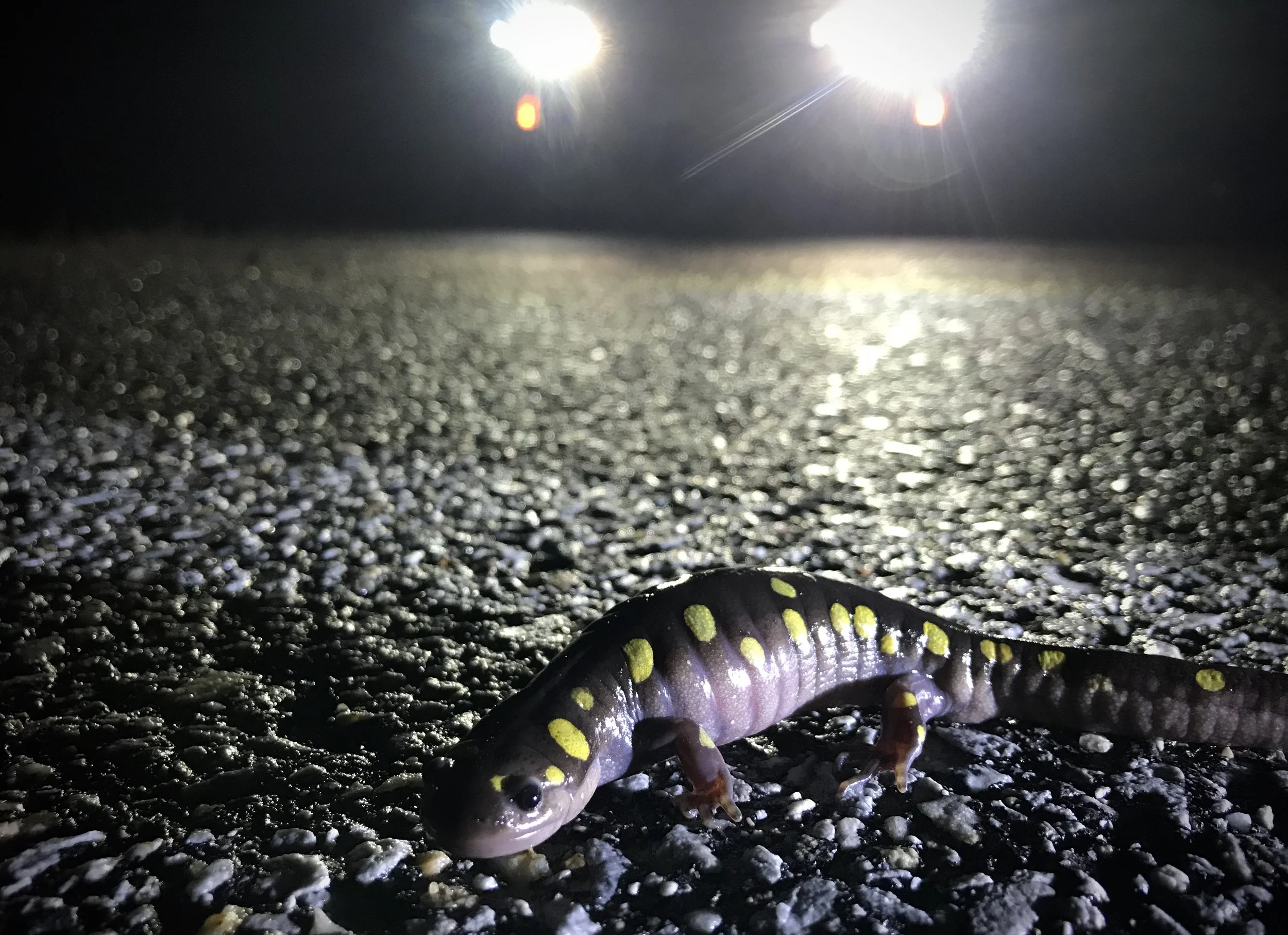Amphibians crossing: Slow down for frogs and salamanders
April 11, 2024 | By Waterbury Roundabout Why does the spotted salamander cross the road? Because it's springtime in Vermont. The brief season is here to watch out for amphibians making their way at night to vernal pools and their favorite spring habitats. Photo of a spotted salamander in Clarendon by Luke Groff, Vt. Fish & Wildlife Department
It’s that time of the year again as amphibians are on the move from their winter habitats to springtime pools and their travels often take them across roadways at night, especially in the rain.
State wildlife biologists with the Vermont Fish and Wildlife Department ask drivers to slow down and be cautious when traveling at night -- or to even take alternate routes to avoid driving roads near wetlands and ponds where salamanders and frogs cross during their breeding season.
In springtime, many of Vermont’s amphibians leave their overwintering sites and migrate to the wetlands and ponds where they will breed and lay eggs. The timing of this annual event, termed Big Night(s), coincides with melting snowpack, thawing soils, relatively warm evening temperatures, and rainfall. Due to this year’s mild winter, these conditions began early and continue.
Herpetologist Luke Groff encourages Vermonters to explore the roads near their homes and report amphibian road crossings to the Vermont Reptile and Amphibian Atlas (vtherpatlas.org/sighting-submission-form). If it is safe to take pictures of the migrating amphibians, please include them in your report. This information is used by Fish and Wildlife, the Agency of Transportation and other conservation partners to assess the need for wildlife passages and barriers that allow all wildlife, not just frogs and salamanders, to more safely cross roadways.
An added bonus is that by observing, it’s likely that you will see creatures rarely out where they cross paths with humans. “One of the benefits of checking out amphibian road crossings is that you can see many individuals and species in a short period and small area, and some species may not be seen the rest of the year,” Groff said. “Spotted and blue-spotted salamanders, for example, belong to a group called the ‘mole salamanders’ because after breeding, they retreat underground or under logs or stumps, and are rarely seen until the next spring.”
Vermonters who wish to contribute to the Fish and Wildlife Department’s work to conserve frog and salamander populations can donate to the Nongame Wildlife Fund on their state income tax form or on the Vermont Fish and Wildlife website.

